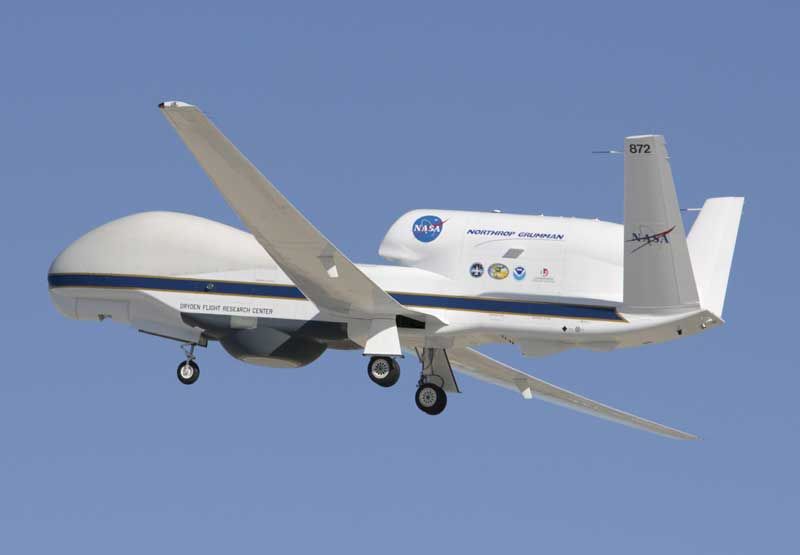
Unmanned Drones to Fly into Hurricanes

Two unmanned drones are taking to the skies during the 2012 hurricane season to spend hours swooping through storms, in hopes that the data they gather can help scientists better understand the bedeviling forces that govern hurricane intensification.
NASA and a long list of research partners are joining forces for the five-year project, dubbed Hurricane and Severe Storm Sentinel, or HS3. The project will use a suite of six different instruments aboard two Global Hawk aircraft to study the bewildering mechanisms that turn some hurricanes into monsters, yet cause others to fizzle out.
Hurricane forecasts have improved dramatically in recent years, yet largely in their predictions of where a storm will go, and when. Just how powerful a storm will be at a given time is far more difficult to forecast.
"Hurricane intensity can be very hard to predict because of an insufficient understanding of how clouds and wind patterns within a storm interact with the storm's environment," Scott Braun, an HS3 mission principal investigator and research meteorologist at NASA's Goddard Space Flight Center in Greenbelt, Md., said in a statement.
NASA researchers first used a Global Hawk as a hurricane research tool during the 2010 hurricane season, and to spectacular effect. "It's a game-changer," Braun told OurAmazingPlanet at the time.
This season, the HS3 team has an improved arsenal of tools and an expanded fleet at its disposal. [In Images: NASA's Hurricane Hunters]
The team will have use of two specially outfitted Global Hawks, and the planes will fly out of Wallops Flight Facility in Virginia instead of their home base, NASA's Dryden Flight Research Center on Edwards Air Force Base, in California.
Sign up for the Live Science daily newsletter now
Get the world’s most fascinating discoveries delivered straight to your inbox.
Relocating to Virginia will cut transit time to and from storms that churn up over the Atlantic Ocean, allowing the drones to spend more time inside hurricanes.
Controlled by pilots at command centers on the ground, the crewless planes can fly for 28 straight hours, and at altitudes greater than 60,000 feet (18,300 meters).
The HS3 drones will gather information on hurricanes' larger environments and also examine the roiling conditions inside a storm as they change over the course of a day; scientists hope the data will improve forecasts of hurricane intensity.
The program kicks off in August, in the thick of hurricane season, which officially began on June 1 and ends Nov. 30. The 2012 hurricane season forecast calls for "near-normal" conditions, according to scientists with the National Oceanic and Atmospheric Administration, who said the outlook indicates somewhere between nine and 15 named storms could spin up in the Atlantic. (Named storms include tropical storms and hurricanes.)
This story was provided by OurAmazingPlanet, a sister site to LiveScience. Follow OurAmazingPlanet for the latest in Earth science and exploration news on Twitter @OAPlanet and on Facebook.












